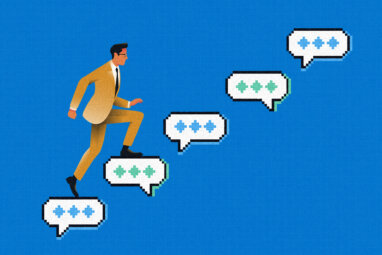The Power of Reconnection — How Dormant Ties Can Surprise You
The Web has made it easier than ever to reconnect with long-lost professional colleagues. Does it pay to do so? New research says yes — and suggests that every smart manager will try.

The world of networking continues to expand. For years, people have been encouraged to build a strong, wide personal network to get information and keep connected. Facebook, LinkedIn, Google and other Internet sites have made everything about this task easier than ever. In particular, they have made access to long-lost friends, colleagues and acquaintances as easy as a few keystrokes. Now with relative ease, people can reactivate what may have seemed like dead connections.
Are those reconnections valuable — particularly in terms of the world of work? Not too long ago, both researchers and many members of the general public assumed that neglected relationships would lose their value and, ultimately, wither and die. And even though networks of contacts are obviously important for many things — finding a job, getting your work done, learning new things and providing social and emotional support — there is only so much time in a day. As a result, there is a limit to how many relationships a person can actively maintain, which is one reason why so many relationships become dormant in the first place.
The Leading Question
It’s easier than ever to reconnect your dormant relationships. Is it worth it?
Findings
- Dormant ties are as valuable — and often even more valuable — than current ties.
- Insights from dormant ties tend to be more novel, and more efficient to get, than those from current ties.
- The pool of helpful dormant ties is surprisingly deep.
Now, though, what used to happen only rarely — at reunions or chance encounters — can happen after a memory, a whim and minimal effort. Moreover, not only are reconnections so much easier to make; it turns out that the old presumption that dormant ties have no value was wrong. Reconnecting dormant ties provides a whole host of benefits, many of them unexpected.
Our research shows that reconnecting dormant relationships is more than just fun — it can be extremely useful. We prompted hundreds of executives to consult people whom they had not been in contact with for three years or more. We asked them to make the reconnection, in person or via telephone, and use their interactions to get information or advice that might help them on an important work project.
References (6)
1. P.D. Killworth, E.C. Johnsen, H.R. Bernard, G.A. Shelley and C. McCarty, “Estimating the Size of Personal Networks,” Social Networks 12, no. 4 (December 1990): 289-312.
2. C. Thompson, “Brave New World of Digital Intimacy,” New York Times Magazine, Sept. 7, 2008, sec. MM, p. 42.





Comments (4)
7 Steps for Legal Professionals to Build Strong Online Presence | Leadership Close Up
Julia Erickson
Rita Ashley
Phil O'Brien